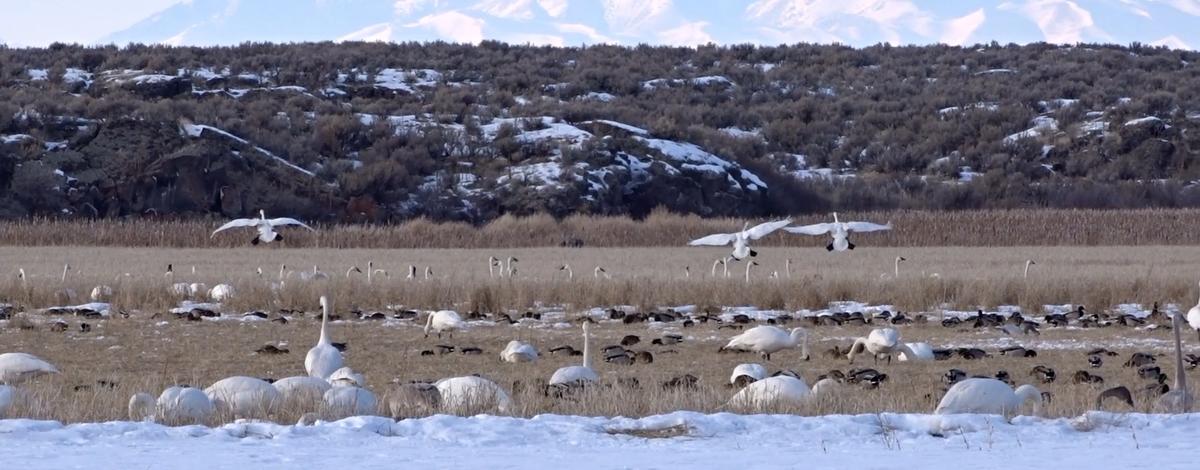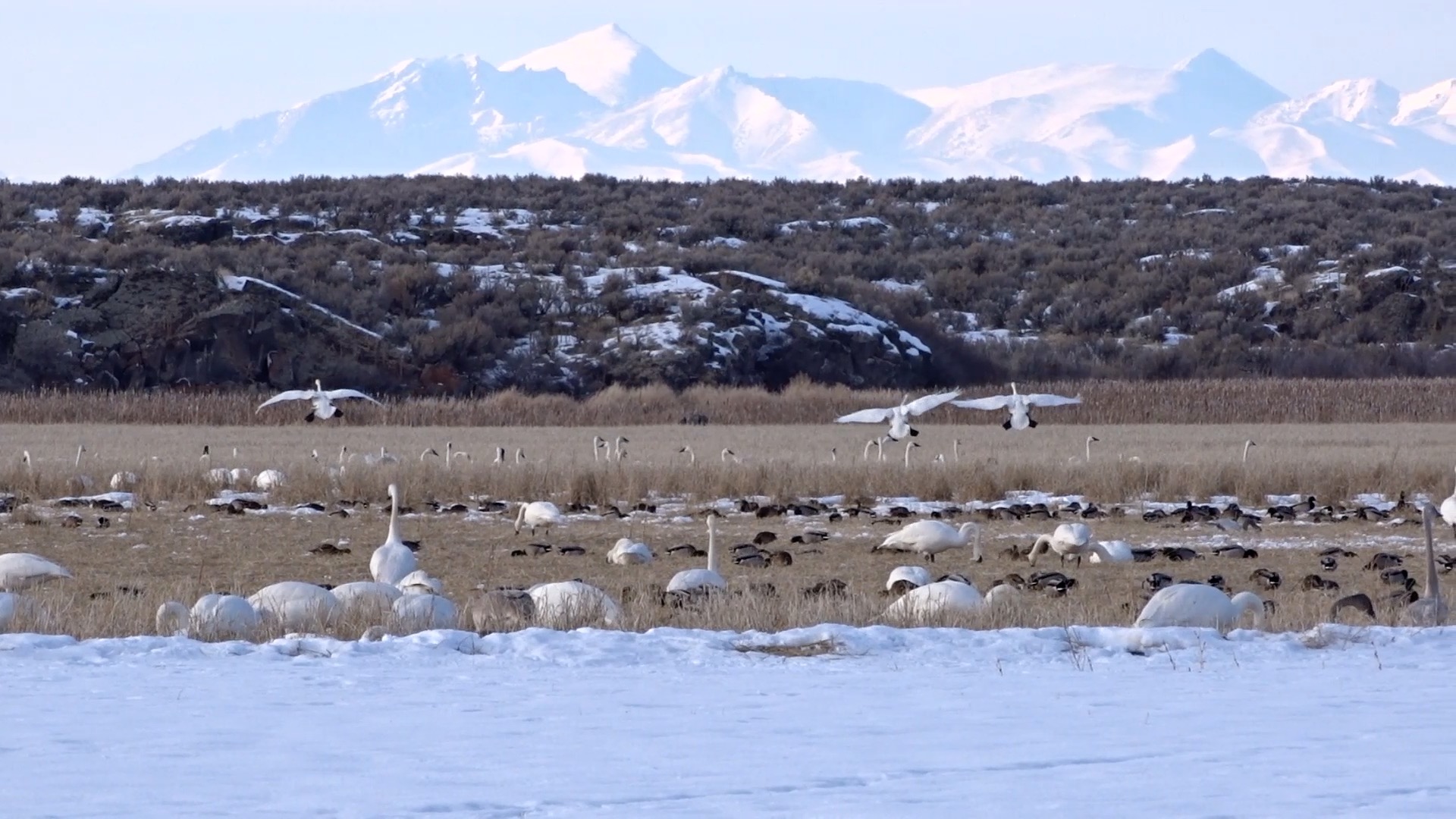The Deer Parks Wildlife Mitigation Units were acquired as partial mitigation for wildlife habitat lost by the construction of the Palisades dam and reservoir, especially mule deer habitat. The name ‘deer parks’ comes from early settlers descriptions of the thick willows and cottonwoods that supported large numbers of deer. The mitigation units are also important stop-over and open-water winter habitat for migrating waterfowl, waterbirds and shorebirds.
Deer Parks has documented more than 3,000 trumpeter swans wintering on the property. This is up to ten percent of the entire Rocky Mountain population.
Some mule deer use the wildlife mitigation units for spring fawning and rearing. Most mule deer in the area move to one of the two nearby Menan Buttes for the winter and use the units for forage. White-tailed deer occupy all segments of the WMA year-round.
The Deer Parks Complex includes three separate properties – Menan, Beaver Dick and Deer Parks - that run along and near the South Fork, Henrys Fork and mainstem Snake rivers
- The Deer Parks Unit, also known as the Menan and Boyle segment, is located on the mainstem Snake River in Jefferson County. The property includes two miles of riverfront, wetlands, uplands, pasture and cropland. A paved county road is adjacent to the property. The North Menan Butte is partially within the Deer Parks unit and rises 800 feet above the surrounding landscape.
- The Twin Bridges Unit is located along the South Fork Snake River in Madison County near Ririe, Idaho. This property includes riverfront, wetlands, former pasture and cropland. A paved county road is adjacent to the property.
- The Beaver Dick Unit is located along the Henrys Fork Snake River in Madison County. The property includes one mile of riverfront, wetland and former pasture. State Highway 33 is adjacent to the property.
The properties are owned by the Bureau of Land Management (BLM) and managed cooperatively with Idaho Fish and Game, the BLM and Shoshone-Bannock Tribes.
Tribal treaty rights are maintained and cultural resources are protected through the NEPA process on all segments of the Deer Creek Wildlife Mitigation Units.


